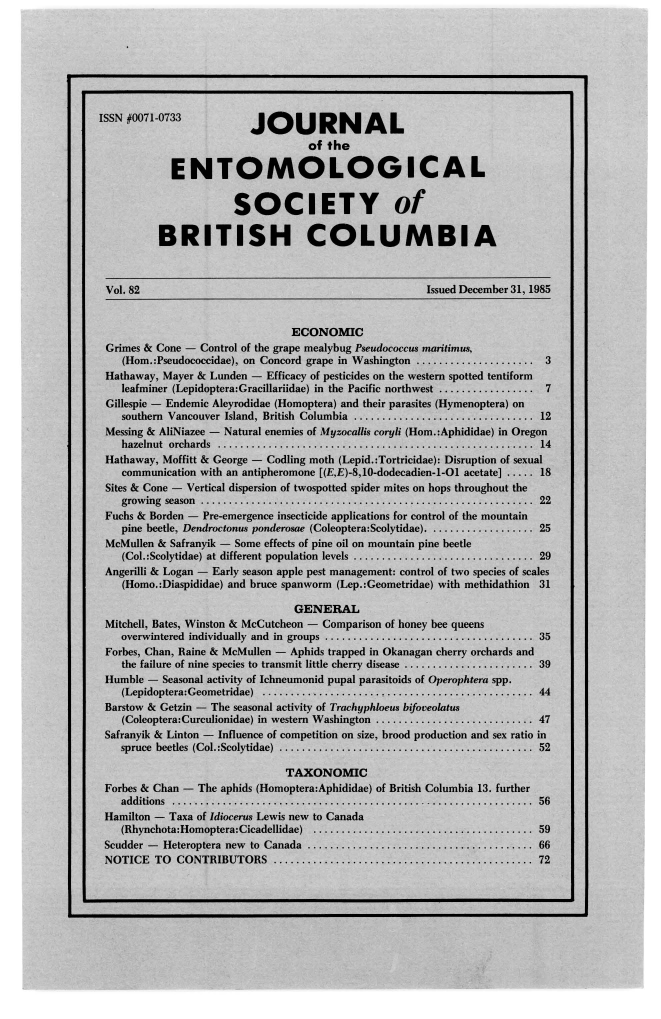Comparison of honey bee queens overwintered individually and in groups
Keywords:
honey bee, <i>Apis</i>Abstract
Productivity of honey bee queens, as measured by area of sealed worker brood and net weight of colonies, was generally higher with queens overwintered in 2-frame nuclei, than with queens overwintered in a group. Poor acceptance and supercedure of group overwintered queens suggest that this method of storage is not yet acceptable for commercial use. Survival of the nucleus queens was low in outdoor 2-frame units during the winter, but improved with an indoor system. Overwintering queens indoors in 2-frame nuclei and outdoors in 3-5 frame nuclei with supplemental feeding of carbohydrate in late winter should provide a source of queens which could partially fulfill market demands in spring.References
Canadian Honey Council. 1982. Minutes and Proceedings.
Corner, J. 1977. Provincial Apiarist’s Report.
Harp, E.R. 1969. A method of holding large numbers of honey-bee queens in laying condition. Am. Bee J. 109:340-341.
Levinsohn, M. and Y. Lensky. 1981. Long-term storage of queen honeybees in reservoir colonies. J. Apic. Res. 20:226-233.
McCutcheon, D.M. 1984. Final report: B.C. honeybee stock improvement project.
Pankiw, P. and J. Corner. 1970. Production of package bees in southern British Columbia, Canada. J. Apic. Res. 9:29-32.
Szabo, T.I. 1977. Overwintering of honeybee queens. 2. Maintenance of caged queens in queenless colonies. J. Apic. Res. 16:41-46.
Szabo, T.I. 1982. Phenotypic correlations between colony traits in the honey bee. Am. Bee J. 122:711-716.
Winston, M.L. 1983. Trends in Canadian beekeeping. Am. Bee J. 123:837-840.
Downloads
Published
Issue
Section
License
Authors who publish with the Journal of the Entomological Society of British Columbia agree to the following terms:
-Authors retain copyright and grant the journal right of first publication with the work simultaneously licensed under a Creative Commons Attribution License that allows others to share the work with an acknowledgement of the work's authorship and initial publication in this journal.
-Authors are able to enter into separate, additional contractual arrangements for the non-exclusive distribution of the journal's published version of the work (e.g., post it to an institutional repository or publish it in a book), with an acknowledgement of its initial publication in this journal.
-Authors are permitted and encouraged to post their work online (e.g., in institutional repositories or on their website) prior to and during the submission process, as it can lead to productive exchanges, as well as earlier and greater citation of published work (See The Effect of Open Access).


